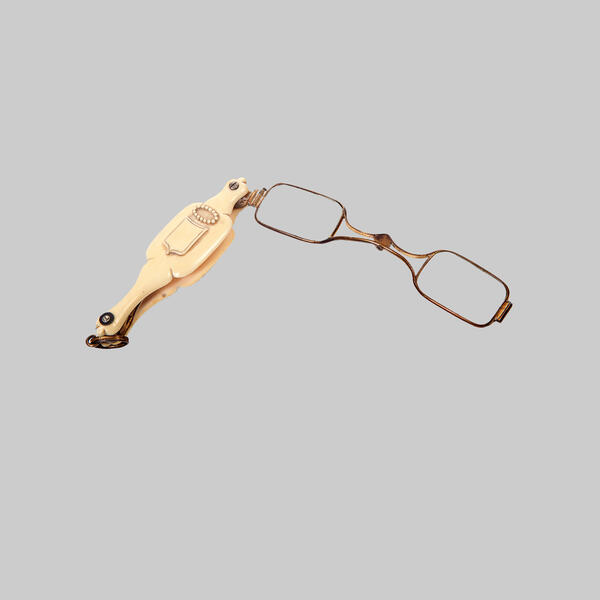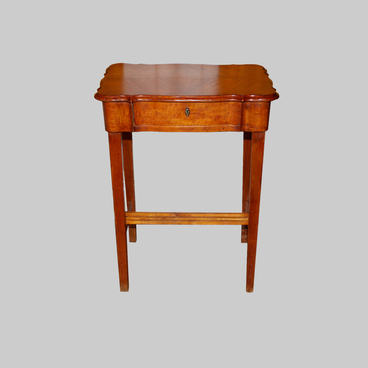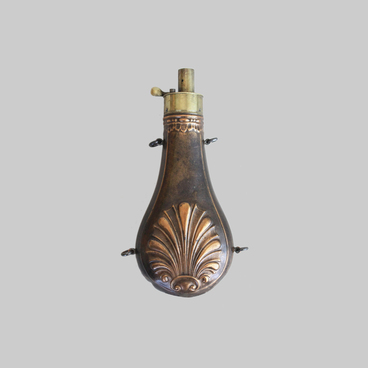The ladies’ folding double lorgnette, displayed in the Decembrists in Yalutorovsk, was made at the end of the 19th century. It was given to the museum by a resident of Yalutorovsk, named Irina Frolova. The lorgnette belonged to her great-grandmother - Elena Tizengauzen, the great-grand-niece of the Decembrist Vasily Tizengauzen.
Lorgnette is a type of glasses that look like pince-nez, but differ in that they are held by the handle, and not a nose clamp. This fashionable accessory appeared in the late 18th and early 19th centuries. They were used like theater binoculars, from time to time bringing it to our eyes.
The inventor of the lorgnette is considered to be English optician, inventor of mathematical instruments and globes, George Adams. He focused on the upper echelon of British society and wanted to make luxurious glasses for aristocrats, which would differ from the usual “plebeian” non-standard design. This is how an elegant lorgnette with a thin frame and a long handle came about. It originally had only one glass and looked like a modern magnifying glass. A similar device was actively used by the Russian Emperor Alexander I, who had poor vision in his left eye since early childhood. By the middle of the 19th century, lorgnettes were considered an almost obligatory attribute of a respectable lady. There were no pockets then in women’s clothing, so this accessory was worn on neck chains, belts, on special chains chatelaines or wrist chains. Men fastened lorgnettes to their vests. In women’s hands, lorgnettes, along with fans, became a must for virtuoso coquetry. Ladies with his help showed their beautiful wrists, thin fingers, expressed attention to gentleman, they showed their favor or complete disregard. For the so-called “emancipants”, the new fashion became a real challenge. Trying to convince the society that external attractiveness is absolutely not important for them, they deliberately “disfigured” themselves with blue lensed glasses.
The design of the optical device is simple: two lenses in a brass frame are attached with a movable hinge to an enameled handle. Closer to the 20th century, the men’s lorgnette was replaced by a more practical pince-nez. For secular ladies, this accessory remained almost mandatory when going in public until early 20th century.
Lorgnette is a type of glasses that look like pince-nez, but differ in that they are held by the handle, and not a nose clamp. This fashionable accessory appeared in the late 18th and early 19th centuries. They were used like theater binoculars, from time to time bringing it to our eyes.
The inventor of the lorgnette is considered to be English optician, inventor of mathematical instruments and globes, George Adams. He focused on the upper echelon of British society and wanted to make luxurious glasses for aristocrats, which would differ from the usual “plebeian” non-standard design. This is how an elegant lorgnette with a thin frame and a long handle came about. It originally had only one glass and looked like a modern magnifying glass. A similar device was actively used by the Russian Emperor Alexander I, who had poor vision in his left eye since early childhood. By the middle of the 19th century, lorgnettes were considered an almost obligatory attribute of a respectable lady. There were no pockets then in women’s clothing, so this accessory was worn on neck chains, belts, on special chains chatelaines or wrist chains. Men fastened lorgnettes to their vests. In women’s hands, lorgnettes, along with fans, became a must for virtuoso coquetry. Ladies with his help showed their beautiful wrists, thin fingers, expressed attention to gentleman, they showed their favor or complete disregard. For the so-called “emancipants”, the new fashion became a real challenge. Trying to convince the society that external attractiveness is absolutely not important for them, they deliberately “disfigured” themselves with blue lensed glasses.
The design of the optical device is simple: two lenses in a brass frame are attached with a movable hinge to an enameled handle. Closer to the 20th century, the men’s lorgnette was replaced by a more practical pince-nez. For secular ladies, this accessory remained almost mandatory when going in public until early 20th century.



